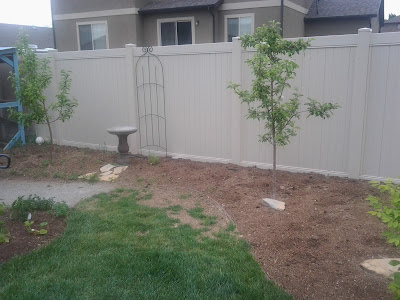I just started growing broccoli the past 2 years and have had wonderful results with it! I started my seeds under lights back in February and planted them the second week in March. If you have problems with cabbage worms, cover the starts with a fabric row cover thin enough to allow light and water penetration in. Make sure you bury the edges in the ground around the plants so the little white butterflies can't lay their eggs on them! If you don't have fabric row covers or didn't get around to putting them on in time, you can use a garlic spray to get rid of them. Here's the recipe:
Blend 2-3 bulbs garlic in a bit of water
Add 2 cups water, 2 tablespoons plant based liquid dish soap, 1 teaspoon cayenne pepper and allow to sit over night. Strain through a cheese cloth and put in sprayer and spray the plant thoroughly. this recipe also works well for wireworms, ants, aphids, slugs, cutworms, and caterpillars.
Broccoli has so many health benefits! I am grateful my kids will eat it by itself, lightly steamed. However, if you or your loved ones don't appreciate as much as we do, try slipping it into salads or soups for added nutrition. Check out the 9 Benefits of Broccoli I love that it is an alkaline food, helps prevent cancer, reduces cholesterol, and detoxes the body!
Harvesting Broccoli
Harvesting broccoli is very simple. Once the head of the plant has grown to a medium - large size (before the head becomes loose and starts to flower) cut it off with a large kitchen knife. Notice in the picture there are little florets next to where I cut off the big one in the middle. You can let these get a little bigger and cut them off for use later or harvest now.
Here is a head I didn't catch in time, so I will let it go to seed and save them for starting seeds next year or in the fall. This is Waltham broccoli (an excellent variety for Utah).
Once the broccoli has been harvested it is ready to be used or refrigerated for up to one week.
This creamy broccoli soup is so good! You won't even notice it's vegan!
6 cups vegetable stock
1 cup cashews
1 medium onion, chopped
1 celery stalk, chopped
1 large carrot, chopped
2 garlic clove, chopped
1 red pepper, chopped
2 medium potatoes, peeled and chopped to 1 inch size cubes
1 large head of broccoli, chopped (about 4 cups)
2 teaspoons dried thyme
Salt and pepper to taste
Puree 1 cup of vegetable stock with the cashews in a blender until smooth. Set aside.
Broccoli, Pear and Feta Salad!
This delicious invention came from a last minute need to put together an extra salad for a family gathering. I have to say I was pretty proud of myself! This was so good! From the garden: broccoli and mint
2 Tablespoons agave
2 cups pecans halves
Coat the pecans with agave in a medium size skillet on medium-low heat. Constantly stir for 5-10 minutes until the pecans are caramelized and slightly darkened. Let cool.
In a bowl mix together:
1-2 heads fresh broccoli chopped into bite size pieces
4 pears chopped
1 cup crumbled feta cheese
Pepper- Mint Dressing:
In a blender puree:
1 cup peppermint or spearmint leaves
Juice of 2 lemons
4 cloves garlic
1 teaspoon peppercorns
1 teaspoon salt
1 cup olive oil
2 tablespoons agave
Pour just enough dressing to coat the salad and serve! Save the rest of the dressing in an airtight container for up to 2 weeks.
































